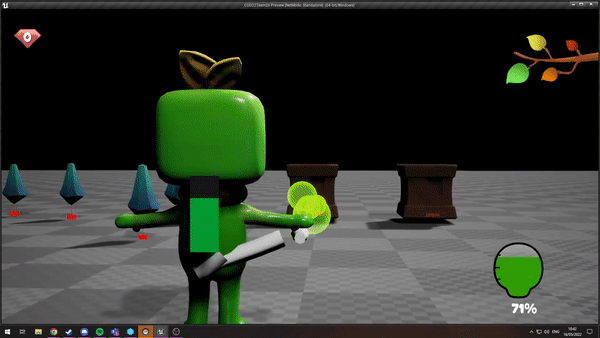Previous Work
Procedurally Generated Dungeon Crawler Prototype
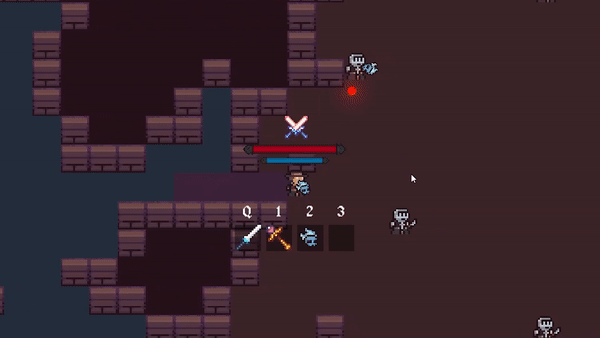
For my Individual Games Technology Project - also known as my Final Year Project, I decided to study into the concept of procedurally generated game levels. I thought the best way to explore this topic would be to make a 2d dungeon-crawler game, where every dungeon is procedurally generated before playing, and is then regenerated upon game replay.
After some research, I decided that I would generate my levels using a method of generation known as The Random Walk. The random walk consisted of an entity choosing a cardinal direction at random, taking one step in that direction, and then picking a new direction, repeating this process for however long specified. This would result in a single path. To generate a room-like shape with this method, I can repeat the process using the same start point.
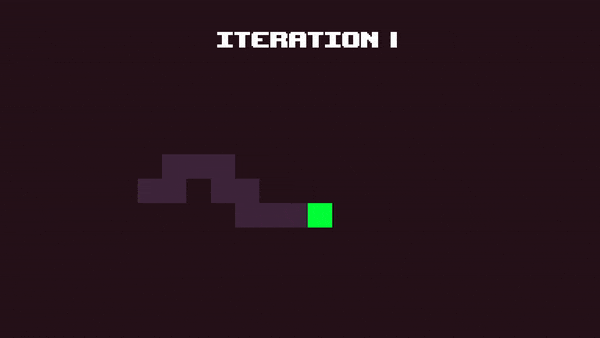
This gives us a single room, but for a dungeon layout we need a few rooms connected by corridors. Fortunately, we can use the random walk generation to also give us our corridors - instead of picking a new direction after every step, what if we picked one direction and moved x amount of steps in that one direction? The result would then be a straight path, but what if at the end of that path we had a 50% chance to either generate a room, or generate another corridor? That way we would have both rooms and corridors. This is known as corridor-first generation, as - in a sense - we are generating corridors before rooms.
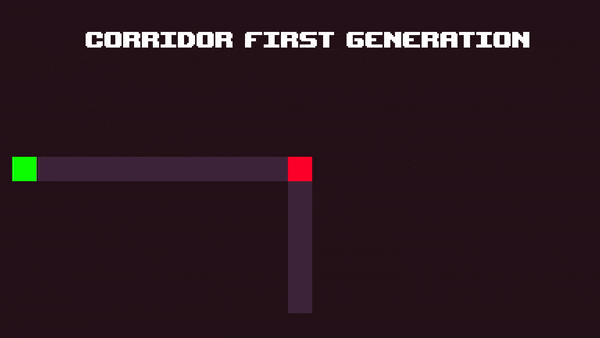
Here are both of the implementations within Unity:

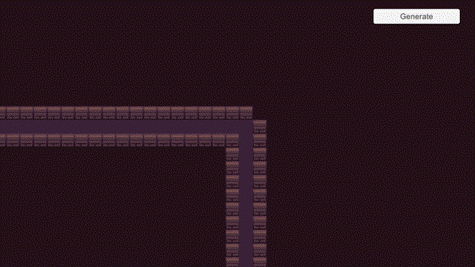
And here are some examples of full dungeon layouts when generated:
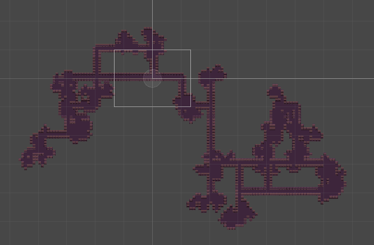
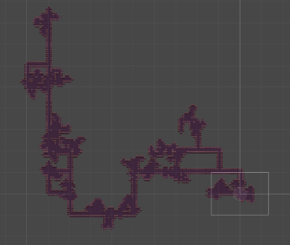
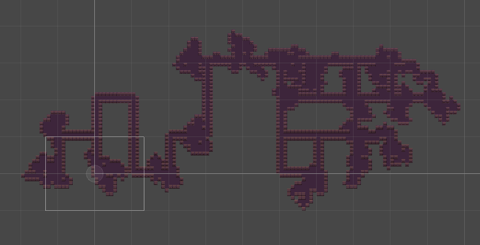
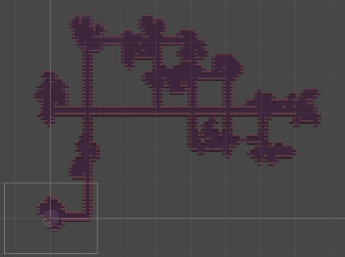
Pizza Time
During my Junior Collaborative project, I worked as a Junior Technician alongside one Senior Technician on Pizza Time - a game where the player plays as a flying pizza and has to collect as many pizza toppings before time runs out. Some features that I worked on include:
The vehicle pathing system - To add some life to the game's environments, the designers decided that we should have fill the levels with cars roaming the streets. I did this through creating a spline path that the cars would then travel along, similar to how a rollercoaster would function. Level designers would then create multiple paths along the roads that many cars could drive on.
Turrets and Homing Projectiles - As a threat to the player, the team decided that our game should include turrets that attempt to shoot down the player. However, because of the nature of the pizza's airborne movement as well as it's hard-to-hit hitbox, the projectiles fired from the turret should have a light homing aspect to prevent the turrets from being underwhelming.
"Spindashing" - A mechanic implemented which can be used both offensively and defensively. Spindashing charges the player forward whilst dealing damage to anything within it's path. This can be used offensively to destroy obstacles ahead of the player, or defensively as a movement method to dodge incoming attacks, or to prevent crashing into something.
Pizza Time can be downloaded and played from itch.io:
Driving Prototype
For my advanced game design and production module, I wanted to experiment with making a car controller. So for this module, I made a prototype for an arcade driving game. The game features a car controller using raycasts which point down from the car to find where the ground is, which is then used to calculate how much force is needed to keep the car's rigidbody hovering above the ground.
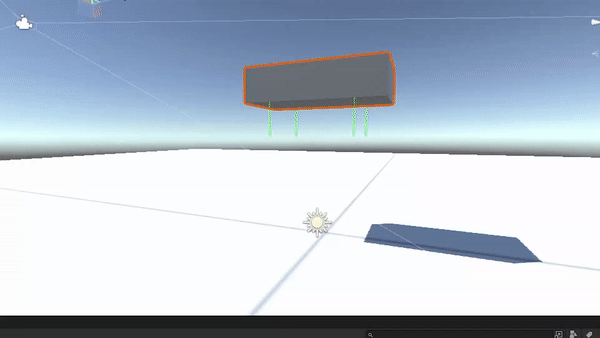
The suspension in development
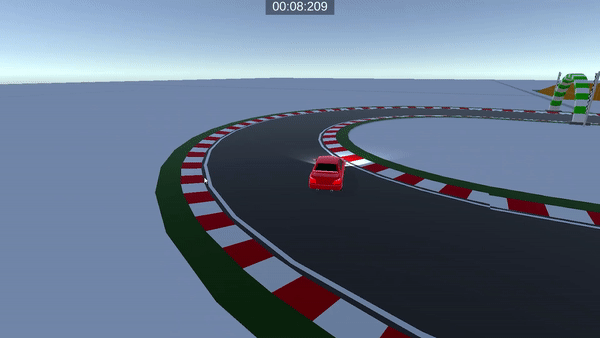
Driving demonstration
KEEP SHOOTING
KEEP SHOOTING is a game I made in the second year of my degree, for the Indie Game Development module. The module included documenting, creating and polishing a game from start to end completely independently (including visual assets). The game is a 2d platformer-shooter where the player has to fight their way to the end of a level. They play as a square, having to fight through armed shapes to reach the end.
Developing this game allowed me to learn a lot about how a lot of different systems would be implemented - which would later be seen in future projects including my Final Year Project listed above. It also helped me to understand the pitfalls and issues of certain implementation techniques that I was able to reflect upon after the project had ended.
The Little Sapling
The Little Sapling is the game I designed with a team Juniors and Seniors for my Senior Collaborative Project. This time, I was the Senior technician on the group, working with one junior technician. I was in charge of developing features as well as managing and overseeing what the other technician was doing via Jira.
The Little Sapling is a 3d puzzle platformer about a little sapling character who has to make it to the end of the level by solving puzzles using a hose attached to his back that he can spray various liquids out of.
A proof-of-concept video of the game after a week in development:
A demonstration of the player using the water hose to hit a target that opens a door
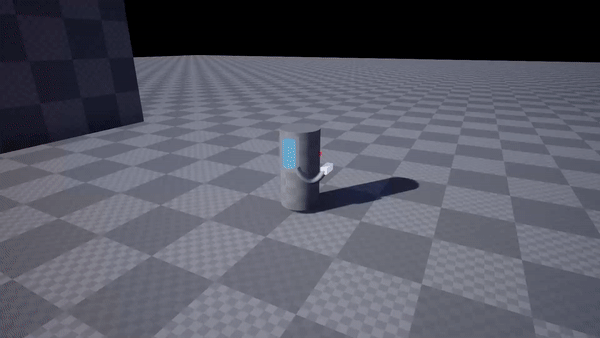
The game featured crates that could be opened by spraying an acidic liquid onto the crates, revealing a bunch of gems that the player can then pick up.
